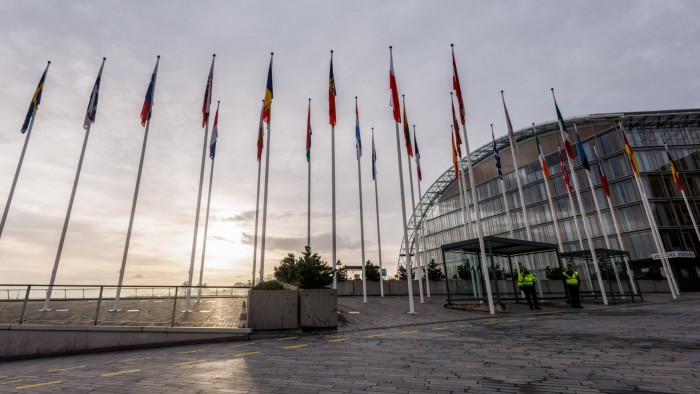Unlock the Editor’s Digest for free
Roula Khalaf, Editor of the FT, selects her favourite stories in this weekly newsletter.
The writer is a former Nato assistant secretary-general and currently a Lithuanian MP
As the war in Ukraine grinds on, the Middle East becomes increasingly volatile and tensions rise in the Indo-Pacific, defence ministries across Europe and beyond face a stark reality: their financial and operational systems are not fit for purpose.
Transformative solutions are urgently needed — not just incremental fixes. The defence special purpose vehicle (SPV) under consideration by European officials and potentially administered by the European Investment Bank is a possible answer. But there is a more comprehensive one under discussion. In a paper due to be published soon by the Atlantic Council, Rob Murray, founder of the Nato innovation fund, sets out the idea of a defence, security and resilience (DSR) bank — an internationally governed institution designed to address systemic challenges in defence financing.
Defence ministries face three interconnected challenges. First, nations need significantly more funding to address growing security threats. Second, even with increased budgets, outdated and fragmented procurement systems make it difficult for defence ministries to allocate resources effectively. Finally, even when procurement succeeds, private-sector suppliers — particularly smaller companies — struggle to secure the credit needed to produce critical components due to commercial banking compliance rules.
The DSR bank model directly addresses these challenges, offering a comprehensive and sustainable approach to defence financing for global allies. It builds on the strengths of multilateral institutions while introducing mechanisms tailored to the unique challenges of modern defence.
On the demand side, the DSR bank would issue bonds backed by an AAA rating, lowering borrowing costs for fiscally constrained countries. By providing loans with extended maturities, the bank would offer predictable and sustainable funding for defence modernisation. Its governance structures would align funding with collective security goals, such as upgrading arsenals and investing in emerging technologies.
On the supply side, the DSR bank would provide guarantees for commercial banks and their compliance risks that would unlock credit for suppliers, ensuring liquidity across the defence supply chain. It would crowd in private investment through institutional investors, including pension funds, that could co-invest with the bank, significantly expanding the pool of available capital.
This follows the well-established model of multilateral lending institutions, such as the IMF or World Bank — the difference being that this one would be the first such lender dedicated to defence, security and resilience.
By contrast, the SPV model being touted in Brussels has structural limitations and too narrow a focus on bond markets rather than leveraging broader capital markets. On defence, the EIB’s mandate prioritises dual-use technologies — those with civilian and military applications — limiting the SPV’s ability to finance mission-critical armaments such as precision munitions, drones and heavy weaponry.
Furthermore, the SPV would not fully leverage the EIB’s AAA credit rating. Its bonds would be tied to the collective creditworthiness of participating nations, many of which lack AAA ratings. This would result in higher borrowing costs passed on to governments compared with the DSR bank.
The SPV would also act only as a financial intermediary, not a strategic driver of reform. If administered by the EIB (or any other existing multilateral institution), it would lack the tailored governance needed to align with defence-specific priorities or drive systemic procurement improvements. Finally, by design, the SPV is a temporary vehicle for a limited purpose. In contrast, the DSR bank is conceived as a permanent institution with long-term objectives.
Defence financing is at a crossroads. The SPV proposal is a step in the right direction, but it is ultimately too narrow to address the systemic challenges nations face. Murray’s plan provides a scalable, sustainable alternative. It offers nations not only the lowest borrowing costs, but also longer-term financing and the structural framework needed to operate effectively and adapt over time.
Establishing the DSR bank will require high-level political negotiation, but the benefits far outweigh the challenges. The Joint Expeditionary Force Summit in Tallinn on December 16 presents a critical opportunity for leaders to redefine defence financing. They would do well to take this proposal seriously.
Read the full article here

